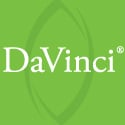
If you could analyze the DNA on the tip of your chromosomes with a microscope, you would find a single sequence – TTAGGG – that repeats hundreds, even thousands of times. This sequence is known as a telomere.
Telomeres are located in the region of DNA at the end of our chromosomes. Chromosomes make organisms and carry all the information needed to help a cell grow, function, and reproduce. They also affect how your cells age, and because they are crucial to maintaining optimal health, especially related to cognition, it is vital to support their biochemical function.
Nobel Prize Winning Doctor, Elizabeth Blackburn on Telomeres and Aging (TedTalks)
What Are Telomeres and Why Do They Need Support?
The primary role of a telomere is to protect the end of chromosomes from deteriorating or from combining with other chromosomes to prevent a mutation or a translocation. Mutations can result from gene rearrangements and other significant changes in the DNA sequence of a chromosome. Translocation is the movement of a segment of DNA from one place to another, either within or between chromosomes.
During cell division, enzymes that duplicate DNA cannot continue their work to the end of chromosomes because the telomeres cap and protect the tips – similar to the ends on shoelaces. If at any point, cells divide without the protection of the telomeres, the cells would lose the ends of their chromosomes as well as the information they contain.1
The highly condensed and single sequence – TTAGGG – varies in the chromosomes of humans and other mammals. The primary function of the telomeres is to protect the chromosomes from being damaged and from losing critical DNA information.2
The shortening of human telomeres is often associated with aging and used as a biomarker. The rate they shorten at can be positively supported by your daily choices, lifestyle, and dietary habits. Natural herbal extracts can also provide powerful antioxidant properties to limit the oxidative damage to the telomeres. However, choosing the right herbal extracts and nutritional supplements should always be done with proper nutritional and supplemental advice from a licensed doctor or registered dietitian.3
Aging is the result of accumulated cell damage because a worn-out tissue cannot renew itself forever. There is a specific limitation on the number of divisions that somatic cells undergo in the course of an individuals life. Therefore, it is important to keep telomere health in good standing to support their proper function and neurocognitive health as we age.
What Is Astragaloside IV?
Astragaloside IV is a compound called a saponin obtained from the widely-used herb Astragalus membranaceus. Astragalus IV (AS-IV) is known for its potent antioxidant and health-enhancing properties and is a natural non-synthetic functional element of the Astragalus herb.*
Although the herb is known to contain saponins like AS-IV, it also contains other essential elements like polysaccharides and flavonoids, which are known to have vital immunomodulating and antioxidant effects.* The supportive effects obtained from the Astragalus herb are mainly identified from the properties of AS-IV.4,5
How AS-IV Supports Telomere Health
While different environmental and genetic factors are associated with faster telomere shortening, the most cited mechanism is oxidative stress. Oxidative stress results from an imbalance between the production of reactive oxygen species and cellular antioxidant defenses and contributes to unhealthy aging. Elevated levels of oxidative stress can alter telomere length or shortening, which can cause DNA damage.6
Keeping our telomeres in good shape, protected from disintegration, and shortening is crucial for overall health. Optimal telomere condition is also important for proper brain health and healthy aging. AS-IV is an advanced antioxidant and a natural ingredient that is intended to help protect you at a cellular level from free radicals and oxidative stress.* With AS-IV you may support your overall health and wellness, promote healthy cell growth, and help protect your telomeres.

Sources:
1 Fu, J., Wang, Z., Huang, L., Zheng, S., Wang, D., Chen, S., Zhang, H., & Yang, S. (2014). Review of the botanical characteristics, phytochemistry, and pharmacology of Astragalus membranaceus (Huangqi). Phytotherapy Research, 28(9), 1275-83. doi: 10.1002/ptr.5188.
2 Smogorzewska, A., & de Lange, T. (2008). Regulation of telomerase by telomeric proteins. Annu Rev Biochem, 73:177-208.
3 Sun, Q., Jia, N., Wang, W., Jin, H., Xu, J., & Hu, H. (2014). Protective effects of astragaloside IV against amyloid beta1-42 neurotoxicity by inhibiting the mitochondrial permeability transition pore opening. PLoS ONE, 9(6), e98866. doi: 10.1371/journal.pone.0098866.
4 Cho, W.C. & Leung, K.N. (2007). In vitro and in vivo immunomodulating and immunorestorative effects of Astragalus membranaceus. Journal of Ethnopharmacology, 113, 132-141.
5 He, Z.Q. & Wang, B.Q. (1990). Isolation and identification of chemical constituents of astragalus root. Acta Pharmaceutica, 25(9), 694-8..
6 Aeby, E., Ahmed, W., Redon, S., Simanis, V., & Lingner, J. (2016). Peroxiredoxin 1 Protects Telomeres from Oxidative Damage and Preserves Telomeric DNA for Extension by Telomerase. Cell Reports, 17(12):3107–3114. doi: 10.1016/j.celrep.2016.11.071.












.jpg)




